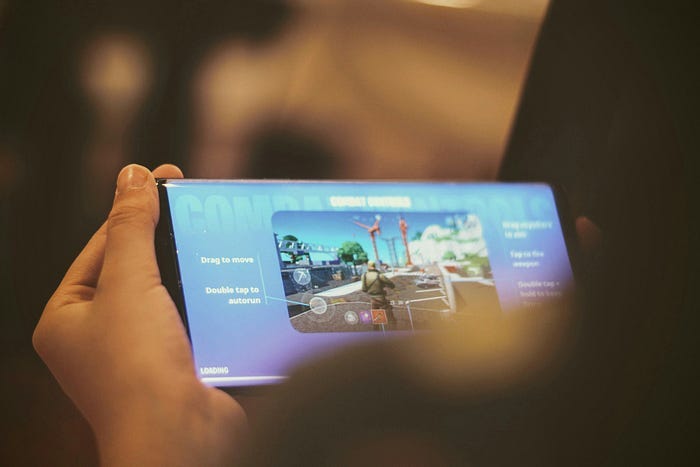Revolutionizing Healthcare: The Role of Smartphones and Wearables
Written on
Introduction to Wearable Technology in Healthcare
This article marks the first installment of a two-part series examining the rise of wearable technology and the pivotal role smartphones play in healthcare. In this section, we will introduce the discussion about the benefits and challenges associated with smartphone-enabled wearables. The second part will delve into specific examples of wearable devices.
The integration of wearables and smartphones is poised to create a more personalized and decentralized healthcare system globally. Wearable devices are increasingly crucial for point-of-care monitoring, diagnostics, and therapeutic management. These sensors are rapidly gaining traction in areas such as remote diagnostics and therapeutic interventions, enhancing health management outside traditional clinical environments. Furthermore, smartphones equipped with advanced inertial sensors and IoT connectivity can act as essential tools for ongoing health monitoring.
As the healthcare landscape becomes more interconnected and digital, new opportunities arise for both healthcare providers and patients. The use of wearables for remote patient monitoring can lead to earlier detection and more effective treatment plans. The widespread availability of smartphones facilitates the integration of wearables, encouraging users to adopt healthier lifestyles.
Despite these advancements, the integration of technology into healthcare presents certain risks. Data privacy and security remain significant concerns, necessitating enhanced measures to protect sensitive health information from cyber threats and misuse. Additionally, ensuring equitable access to these digital health technologies is vital to prevent widening healthcare disparities.

Ethical Considerations in the Future of Wearables
As wearable technology evolves towards continuous health monitoring and earlier disease detection, it is essential to approach these advancements with ethical considerations in mind. Collaboration among designers, healthcare professionals, technologists, policymakers, and ethicists is necessary to develop frameworks that uphold patient confidentiality and data security while promoting inclusivity. Achieving this balance can lead to a healthcare model that is not only device-driven but also socially embedded and accessible on a global scale.
The Practical Benefits of Wearables in Medicine
The most significant advancement presented by wearable technology in contemporary medicine is the capacity for remote monitoring of patients' daily conditions and the ability to adjust their care accordingly. Wearables can effectively monitor, diagnose, and treat, contributing to a decentralized healthcare model. It is crucial that these devices are designed to address real health challenges and seamlessly integrate with existing health data ecosystems, replacing costly traditional monitoring methods.
Smartphones serve as ubiquitous devices capable of integrating diagnostic and therapeutic functions within a wireless framework. They facilitate more accurate diagnoses and monitoring by processing real-time data in a decentralized manner, providing immediate feedback to patients through personalized healthcare notifications, educational resources, and medication reminders.
The potential for smartphones to act as independent health monitoring tools extends beyond their role as wearable platforms. Equipped with advanced computing power, sensors, and IoT capabilities, smartphones can deliver significant cost-saving opportunities for both patients and healthcare providers due to their widespread presence.
Interoperability and Continuous Data Collection
A key requirement for effective digital healthcare is device interoperability and continuous data collection. This involves the seamless integration of meaningful insights for healthcare providers while accommodating patients' preferences and ensuring trustworthy data from various devices.
While a one-size-fits-all approach is not feasible, digital health technology holds the potential to enhance care delivery when it embraces diversity and fosters interoperability.
The Future of Integrated Health Monitoring
Smartphones, as wearable devices and ambient nodes within the health ecosystem, can track and analyze health parameters in real time, fostering deeper engagement and contextual feedback. When this functionality is fully realized, smartphone-enabled wearables may detect severe health events earlier than traditional physician assessments, leading to timely medical interventions and improved outcomes.
Moreover, smartphones can directly connect with online medical services, enabling patients to monitor their health and alert healthcare providers of potential issues. In this model of digital medicine, patients can receive immediate responses from healthcare professionals, alleviating their stress and reducing the burden on the healthcare system.
The cost-effectiveness of this business model stems from the ubiquitous nature of smartphones, which address several challenges by minimizing the need for clinical visits, thus conserving time and resources for both patients and healthcare facilities. However, before fully harnessing the potential of this model, three challenges must be addressed: 1) data privacy issues, 2) the digital divide, and 3) the establishment of a robust, reliable system to support this framework.
Chapter 2: The Impact of Wearable Technology in Healthcare
The first video title is A New Era of Medical Care: The Impact of Wearable Technology. This video discusses how wearable technology is revolutionizing patient care and improving health outcomes.
The second video title is 149 AI in Wearables in the Healthcare Industry with Raj Sangroula. This video features insights into the role of artificial intelligence in enhancing wearable technology for better healthcare delivery.
Reference:
Beyond the clinic: the rise of wearables and smartphones in decentralising healthcare | npj Digital Medicine (nature.com)